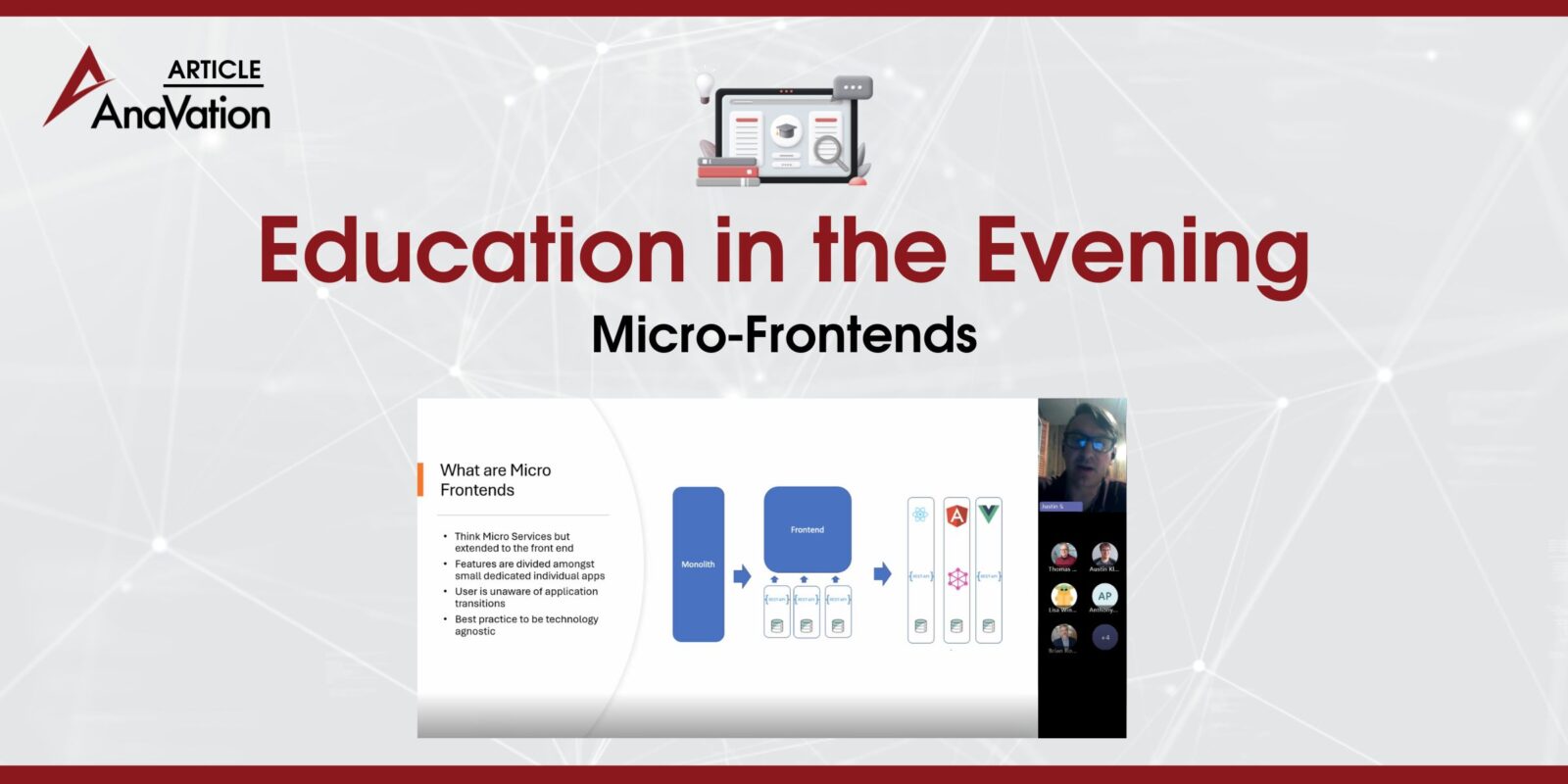In our latest Education in the Evening session, one of our AnaVators, Justin, gave an insightful presentation on Micro-Frontends, a modern web architecture that extends the concept of microservices to the user interface. Using a real-world example from a project developed over seven years, he demonstrated how this approach breaks up a frontend monolith into smaller, dedicated applications. His example illustrated how features can be independently developed, deployed, and scaled—while also surfacing the challenges that come with this approach.
Justin emphasized that adopting a Micro-Frontend architecture isn’t a one-size-fits-all decision. There are technical, operational, and even organizational factors to weigh when considering this move. Justin explored the key benefits of Micro-Frontend architecture, including increasing development speed, a larger development team, subject matter experts can be placed to concentrate on their area of expertise, flattens out management structure, site reliability with fewer full outages, framework upgrades, releases can be much smaller, and reduces testing time. However, he also outlined the trade-offs, such as added complexity, the overhead of coordinating across teams, challenges with version management, and the need for strong product champions to maintain alignment.
The session included a walkthrough of the project’s structure, a discussion on when it is or isn’t the right time to adopt Micro-Frontends, and wrapped with an open Q&A where AnaVators engaged in thoughtful dialogue on how this architecture could apply to future efforts.
Thanks to Justin for sparking such a great discussion, sharing his experiences working with Micro-Frontends, and providing insightful knowledge!





